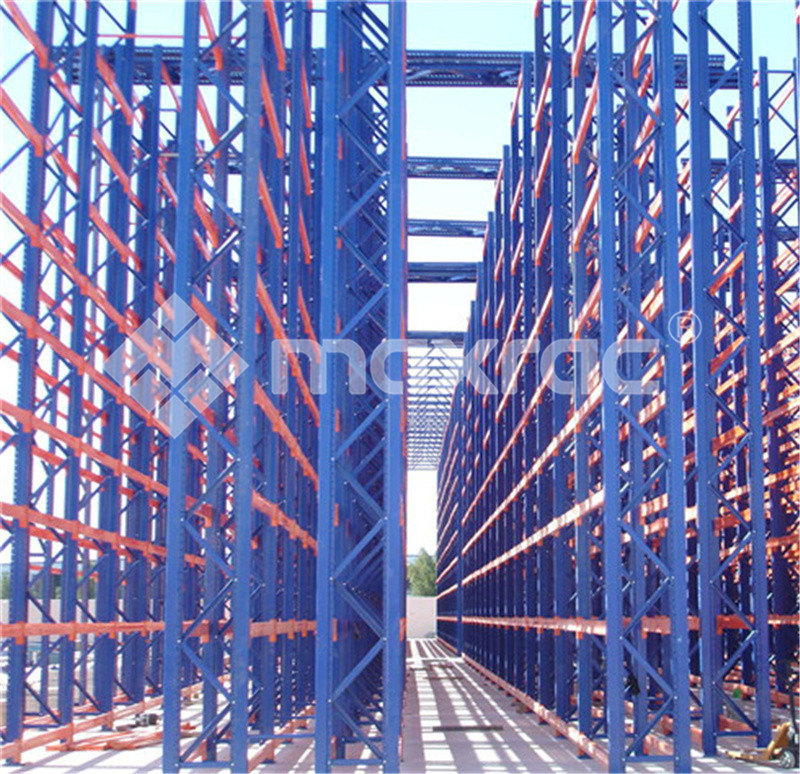What is rack supported warehouse?
Warehouses are the backbone of many industries, serving as the central hubs for storage and distribution of goods. The design and layout of a warehouse play a significant role in its efficiency and functionality. One innovative solution that has gained popularity in recent years is the rack-supported warehouse. In this article, we will explore what a rack-supported warehouse is, its benefits, and its various applications in modern logistics and storage.

Defining Rack Supported Warehouses
A rack-supported warehouse is a type of storage facility that utilizes the structural elements of the racking system to support the entire building's roof and walls. Unlike traditional warehouses with columns and beams supporting the structure, rack-supported warehouses maximize the use of vertical space by integrating the storage racks into the building's framework.
Key Components of a Rack Supported Warehouse:
Racking Systems: The primary feature of a rack-supported warehouse is the extensive racking system. These racks are typically installed in rows and columns, creating storage bays and aisles for easy access and retrieval of goods.
Roof and Walls: The racking system not only supports the stored goods but also forms an integral part of the warehouse's structure. The racks serve as load-bearing elements for the roof and walls, eliminating the need for additional support structures.
Advantages of Rack Supported Warehouses:
Rack-supported warehouses offer several advantages, making them an attractive choice for many businesses. Let's explore these benefits in more detail:
1. Space Optimization:
One of the most significant advantages of rack-supported warehouses is their ability to maximize vertical space. Traditional warehouses with support columns can limit the storage height, but in rack-supported warehouses, you can stack goods much higher, utilizing every available inch of space efficiently.
2. Increased Storage Capacity:
The ability to stack goods higher and use the vertical space more effectively translates to a significant increase in storage capacity. This can be especially valuable for businesses with limited land or floor space.
3. Structural Integrity:
The racking system provides structural integrity to the warehouse. It is designed to withstand heavy loads, making it a durable and long-lasting solution. The entire structure is engineered to meet safety standards and withstand various environmental conditions.
4. Accessibility and Efficiency:
Rack-supported warehouses are designed for efficient goods handling. With well-organized racking systems, it's easy to access and retrieve goods quickly, improving overall warehouse productivity. This is crucial in industries where inventory turnover is high.
5. Cost-Effective:
While the initial investment in a rack-supported warehouse may be higher than traditional structures, the long-term cost savings can be substantial. The increased storage capacity and efficiency can lead to reduced operational costs over time.
6. Customization and Flexibility:
Rack-supported warehouses can be customized to meet specific storage requirements. This flexibility allows businesses to adapt the warehouse layout to their unique needs, making it a versatile solution for various industries.
Applications of Rack Supported Warehouses:
Rack-supported warehouses are versatile and can be adapted to suit a variety of industries and storage needs. Some common applications include:
1. Retail and Distribution Centers:
Retail businesses often use rack-supported warehouses to efficiently store and manage their products, ensuring easy access and quick restocking of store shelves. Distribution centers benefit from the increased storage capacity and organized goods handling.
2. Manufacturing and Production:
Manufacturers often rely on rack-supported warehouses to store raw materials, work-in-progress items, and finished products. The efficiency of these warehouses streamlines production and ensures timely order fulfillment.
3. E-commerce and Fulfillment Centers:
With the rapid growth of e-commerce, rack-supported warehouses have become essential for fulfilling online orders quickly and accurately. The vertical storage capacity is especially valuable in managing a wide range of products.
4. Cold Storage Facilities:
Cold storage facilities, which house perishable goods such as food and pharmaceuticals, benefit from rack-supported warehouses' efficient layout and access to temperature-controlled storage space.
5. Automotive and Aerospace:
In industries that deal with large and heavy parts, like the automotive and aerospace sectors, rack-supported warehouses provide a secure and organized storage solution for various components and materials.
6. Third-Party Logistics (3PL) Providers:
3PL providers often use rack-supported warehouses to accommodate the diverse storage needs of their clients. The adaptability and efficient use of space make them ideal for such operations.
Challenges and Considerations:
While rack-supported warehouses offer numerous advantages, there are some challenges and considerations to keep in mind:
1. Initial Investment:
The construction of a rack-supported warehouse typically involves a higher upfront cost compared to traditional warehouses. However, businesses should assess the long-term benefits and potential cost savings.
2. Design and Engineering:
Proper design and engineering are crucial to ensure the structural integrity and safety of the warehouse. This may require collaboration with experts in warehouse design and construction.
3. Maintenance:
The racking system and structure need regular maintenance to ensure safety and longevity. This includes inspections, repairs, and replacements as needed.
4. Adaptation to Goods:
Businesses must consider the nature of their goods when opting for a rack-supported warehouse. Some products may be better suited for this storage solution than others.
In Summary:
Rack-supported warehouses have become a prominent solution for businesses looking to optimize storage space, increase capacity, and improve overall operational efficiency. These facilities offer a cost-effective and adaptable approach to modern warehousing needs, making them essential in a variety of industries, from retail and manufacturing to e-commerce and logistics. While the initial investment and design considerations should not be underestimated, the long-term benefits of rack-supported warehouses make them a compelling choice for businesses seeking to enhance their storage and distribution capabilities in today's competitive market.

